Have a roaring good time tiger spotting in Central India

There are a number of superb national parks in India, and Central India has three of the best: Panna, Bandhavgargh and Kanha. We’re bound for Bandhavgargh and Kanha and who knows, if we get lucky, we might even see a tiger.
We arrive in Delhi to find that there’s a financial “crisis”. In an effort to stamp out the huge black market trade in money and tax avoidance, the Government has withdrawn 1,000 and 500 rupee notes from circulation.
This has meant that Indians who have dutifully paid tax on their earnings have to line up at banks to exchange the now useless notes. Those who have been avoiding tax and have squirrelled away vast sums of cash under floorboards and holes in the garden are now struck with millions of rupees in now useless notes.
The overflow affect has hit ordinary Indians and, of course, tourists. ATMs have run out of money and if you’re prepared to queue for four hours the most you can withdraw is 2,000 rupees, or around $40AUD. We arrived in India with 190 rupees — about enough to buy you a bowl of dhal and some nan bread at a mid-range restaurant.
Thankfully we’re saved by Anuj, whose company Earthen Experience has once again arranged our trip. Over dinner he happily offers to change $100 — at a very generous rate I might add — and we’re saved.
We’re travelling to Bandhavgarh via Khajuraho which, after the Taj Mahal, is the most visited ancient monument in India.
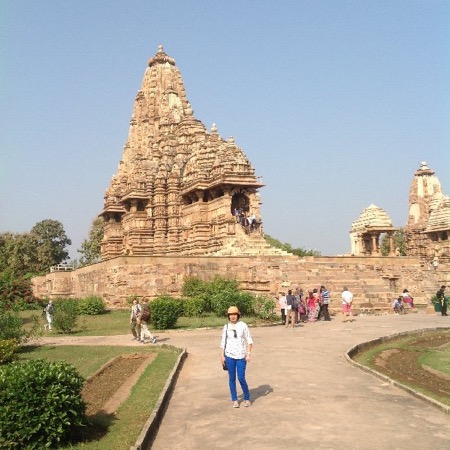
The complex is a unique example of ancient Indo-Aryan architecture and sculptures and the buildings date back to the ninth a 10th century.
It is believed that 85 temples were originally built but now only 25 remain. It’s hard to fathom the endless hours of work that went into each temple. Hundreds of thousands of individual sculptures adorn the walls, many of them decidedly pornographic in nature. Inventive, artistic bonking was obviously alive and well in the ninth century.
Many of the stalls in the complex are selling Khajuraho souvenir books and scaled down picture magazines of the Kama Sutra. A young novice Buddhist monk is scanning the Kama Sutra. Probably not the ideal reading material if you’re about to undergo 18 months of celibacy.
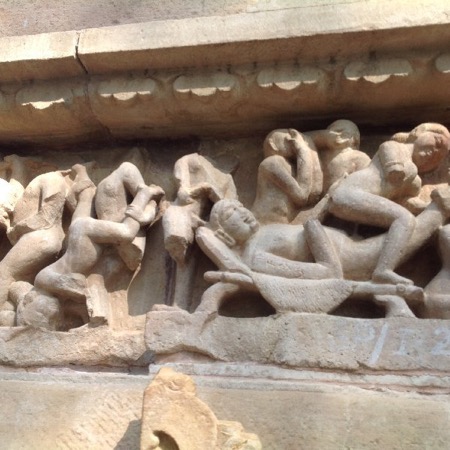
We’re staying at the Hotel Isabel, a small boutique hotel with genuine character and subtle charm. The next day our driver takes us to visit the “top end” hotels in the area. There’s the Taj, the Raddison, the Ramada and the Lalit. The only vaguely interesting one was the a heritage hotel called the Syrna. Frankly we were more than happy with our Isabel and the staff were great.

We set off on the five-and-a-half-hour drive to Bandhavgarh, which would undoubtedly prove to be the highlight of our week in Central India. For a number of reasons.
The road is not good. Mainly because they’re trying to fix it. As per usual, in India we share the road with an assortment of trucks, buses, tuk-tuks, motorcycles, bikes, pedestrians, dogs, goats and cows. Cows have right of way. Always. This can create chaos when one decides on an afternoon nap in the centre of the road. Traffic weaves around the entirely unfazed bovine who happily chews her cud and contemplates a very simple and privileged life. The tiger may be king of the jungle but the cow is the queen of the village. And the city.
We’re staying at Bandhav Villas and for once I’m lost for words. During my years traipsing the world as a television reporter I’ve stayed in the best — and the worst — hotels in the world. I can honestly say this was the best. Not just because the rooms were huge and furnished with exquisite taste, but Vijay and his staff were not only unbelievably friendly and informative, but they genuinely seemed to care that all was right in your world. The naturalist, Yash, is a former finance graduate who chucked in office life in New Delhi to sample the jungles and wildlife in Central India. He’s incredibly knowledgable and obviously loves his job.
The only downside is the food. Hang on, I’d better rephrase that. The food is out of this world! There’s just too much of it. Even breakfast is a culinary masterpiece. And don’t get me started on lunch and dinner. Every night we eat a dinner in a different part of the resort. On our third night we’re right in the jungle with mini lights hanging from the branches and dining tables set up beneath the trees. It’s magnificent. We both reckon we’ve gained at least five kilos by the time we leave.
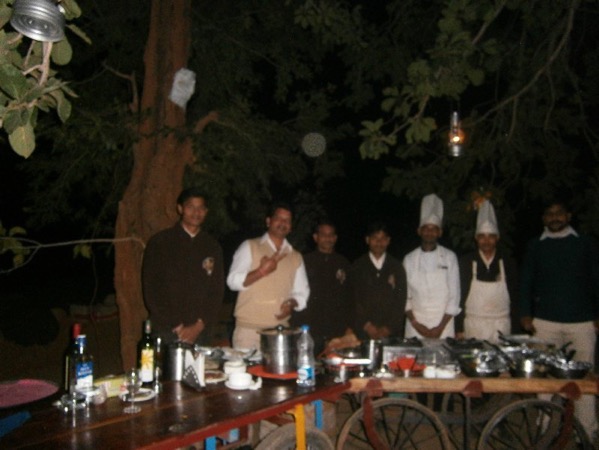
The cost is roughly equivalent to a mid range city hotel only it includes breakfast, lunch and dinner. Every meal is a triumph.
But, of course, the reason for our visit is the wildlife. In particular, the tiger. There are around 75 tigers in the park at any given time but of course finding them can be a bit like looking for a needle in a haystack. Only you can’t go into the haystack. You travel on special jeeps with raised seats and on no account are you allowed out of the jeep and the jeep is confined to dirt tracks winding their way throughout the park.
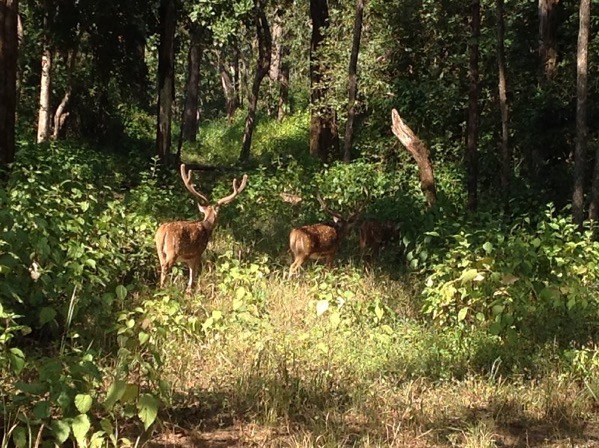
The driver and a guide are looking for tiger prints in the dirt and listening for “alarm” calls from the langur monkeys who have a bird’s eye view from the top of the forest. At this time of year (November) you’ve probably got a 60-40 per cent chance of seeing a tiger. In the summer it’s easier because the abundant pools left over from the monsoon have dried up and all the animals are forced to drink at the water holes.
We set off at six in the morning and it’s freezing. And I mean freezing! Apart from three layers of clothing we’re also wrapped in blankets supplied by the hotel. This is the optimum time of day to spot any wildlife, especially tigers. The driver and guide study the tiger tracks in the dirt and interpret the age and direction they’re travelling.
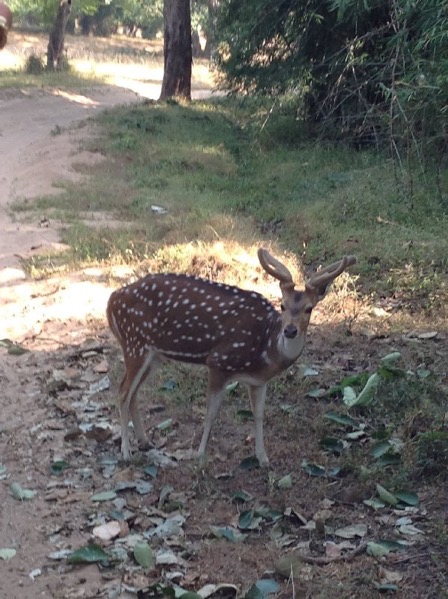
The jungle is dense so we’re really reliant on the tigers coming onto the track as they travel over 30km every night. According to the guide, a female tiger is in the area with her three male cubs who are 16 months old. In other words, fully grown. We stop for three minutes, listening for alarm calls that will help narrow down their location. Just as we set off again our guide gesticulates and the driver hurriedly hangs a Uey and we head back to where we were.
On the side of the track is the female. She’s massive. She glances back in our direction and shows no concern at us disturbing her early morning ablutions. She’s used to vehicles. Finishing her “business” she then wanders slowly back into the forest. Sadly the jungle is too dense and she’s soon invisible. We drive on and then ten minutes later we see the three “cubs”. They’re just off the track and obviously gearing up for their daytime nap. We sit there for half an hour taking photos and videos and are soon joined by other jeeps carrying some fairly serious tiger paparazzi. Over a late breakfast in the park, one of them, an Indian living in Detroit, shows us some magnificent photos. Christ, you can even see their whiskers glistening in the early morning sunlight!
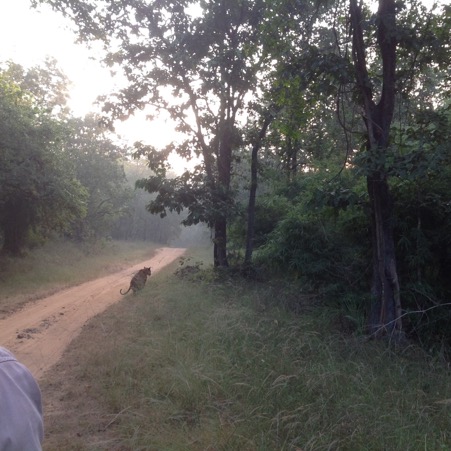
There’s plenty more wildlife to see in the park. Spotted deer are very common and there are also sambar, swamp and barking deer. The park is also home to the sloth bear, which sadly we never saw although his poop was in evidence all over the place.
We do another safari with Yash the next morning but we don’t see another tiger. Plenty of magnificent birdlife, including egrets and hornbills, but no tiger. Still, at least we saw one. Well, actually four.
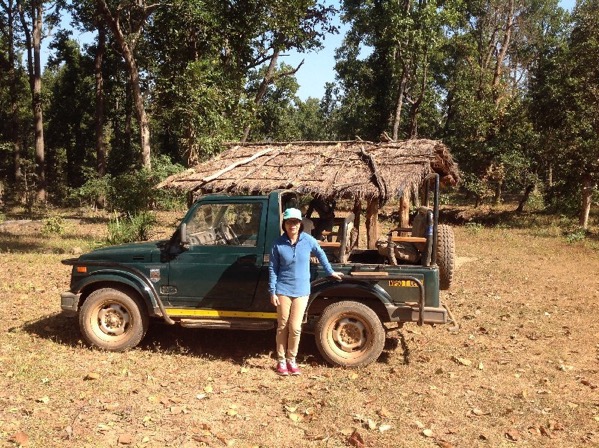
Six and a half hours away is Kanha National Park. Roughly 2,000 square kilometres it’s easily the biggest in Central India and is divided into four zones, compared to Bandhavgarh’s three. As with Bandhavgarh, only 20 per cent of the park is open to visitors. Kanha is where Rudyard Kipling set his Jungle Book and some of the locals believe that the world’s most famous Jungle Boy really did exist. And as for Shar Khan…..
They say there are 96 tigers in Kanha but sadly on our two safaris we didn’t see any of them. In summer you are virtually guaranteed to see at least one but the temperatures sit at close to 40 degrees.
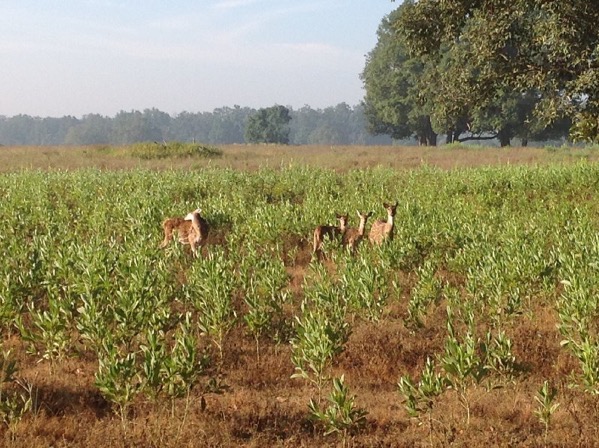
We’re staying at Chitvan Jungle Lodge which also comes with all meals included and here again the manager Rohip and his staff are fantastic. The chef is Ajay and he’s justifiably proud of his food. He’s also a cricket tragic, like my wife Cecile, (don’t ask me how a Filipina became a cricket tragic) and is captain of the local area’s cricket team. His grin is wider than Kanha Park, when India thrash England by eight wickets!
After our unsuccessful tiger-spotting safaris, we decide to do an early morning 12km walk in the buffer zone with a guide. Again, lots of birdlife and monkeys but the deer are very nervous of humans on foot. We also see tiger tracks. The tiger had preceded us to a water hole by about an hour. I’m not sure what it would be like to come face-to-face with a tiger on foot.
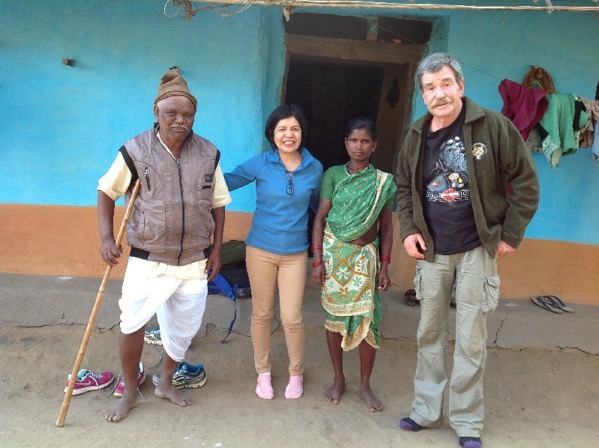
We also take the opportunity to visit a couple of nearby villages. One is inhabited by the Gond people, quite a common tribe in Central India. The other is a Baigar village. This tribe was removed from the jungle where they had quite happily lived for centuries. But, of course, their staple diet was wild animals and they also grew some crops.
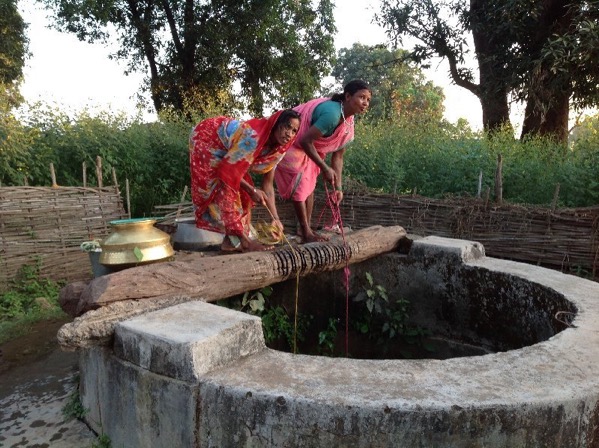
Understandably, they weren’t happy about being evicted. They seem to have adjusted, though, and the school kids emerge from huts made from clay and cow dung and set off for school in pristine school uniforms. The women’s dress is also different to the Gond. Their saris only come down to the knee and they have tattoos on their face, arms and legs.
Our next destination is Mysore via a six hour drive to Nagpur and then a plane trip to Bangalore. I’m looking forward to once again sharing the road with the trucks, buses, tuk-tuks, motorcycles, bikes, pedestrians, dogs, goats and cows. Ok, I lied. But only a little.












 Proudly Australian owned and operated
Proudly Australian owned and operated